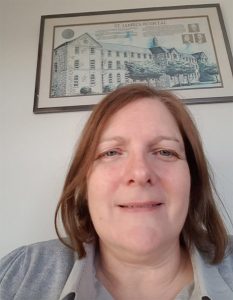Ms. Mary O’Brien, Assistant Director of Nursing at St. James’s, said that around 2015, she first heard of the concept of scan for surgery.

“This is all about patient safety, but it has also resulted in operational efficiency and cut costs.
“Before we introduced it, the Nurse Managers in the theatre would spend lots of time on a computer, doing stock taking and placing and chasing up orders. All of this reduced the time available for the patients, meant it could be difficult to trace product to an individual patient, resulted in waste when products on the shelf reached their expiry date before they were used and meant we could run out of products.
“In Scan for Surgery, we introduced bar coding for each product. When a product is used it is scanned to the patient, an automated message for replacement product is then sent to SAP which sends an automated message to the supplier. A replacement is then delivered to the theatre.
“For the practitioner, it takes just two minutes to set up the process, scan in the patient’s identification and then the product and it is done. Our staff are very confident about it now, it’s second nature to them.
“This has improved patient safety and operational efficiency and reduced costs. There are fewer runs to the main store, the right product is in the right place and we are confident that the product we need will be there.
“All our products are now traceable to the patient through the bar coding, which is safer. Products on the shelf do not go out of date and we do not run out of products. There is increased visibility of real-time patient and procedure level costs, which facilitates decision making on budgets etc.”
Ms. O’Brien said that when they were introducing the system they brought information back from the UK and tailored it for local use.
“We listened to staff because they were the users and got their input on improvements, so we have continuous improvement to the system. We have reduced the steps involved in the system for nurses from 9 to 2, we changed the system to fit theatre flow, improved data capture processes and upgraded flow carts.
“We have reduced our inventory balance from €841,400 in October 2017 to €745,200 in February 2018. The average patient cost has also been brought down from €3,000 in October 2017 to just over €2,000 in January 2018.
“We can also see at a glance the cost of each item and who is using them.”

